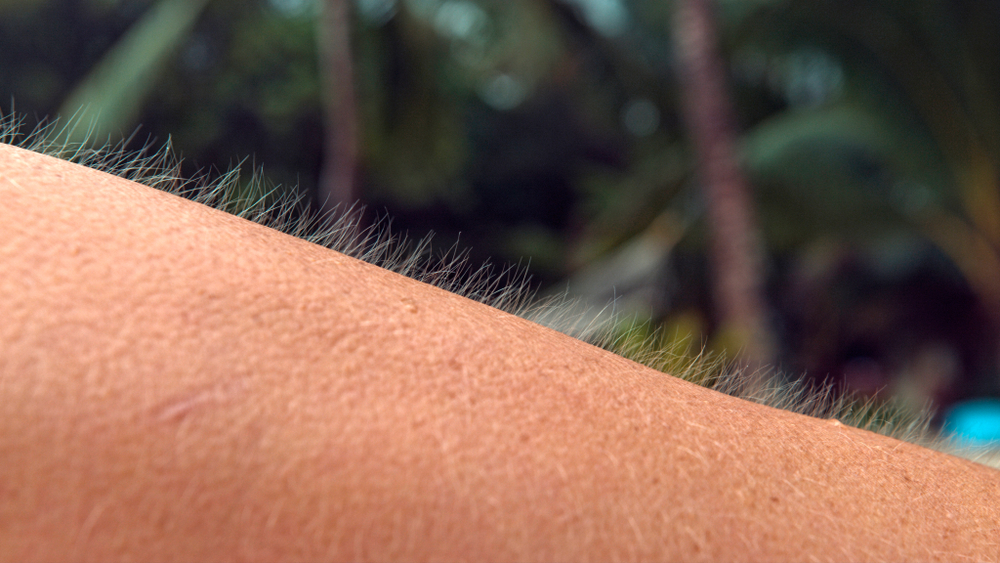Goosebumps, piloerection or cutis anserina are fascinating phenomena that cover our skin in tiny, raised bumps. We’ve all experienced these involuntary shivers at some point, whether from a thrilling moment in a book, a bone-chilling scene in a movie, or even during a heartfelt conversation. But what exactly are goosebumps, and why do they occur? Let’s explore the intriguing nature of this physiological response.
Goosebumps occur when the tiny muscles surrounding our hair follicles, known as arrector pili muscles, contract. These contractions cause the hair to stand on end and create the characteristic raised bumps on our skin. This response is believed to be an evolutionary relic inherited from our distant ancestors.
Goosebumps are closely tied to our fight-or-flight response, triggered by the release of adrenaline in response to a perceived threat. Our bodies prepare for action in dangerous or emotionally charged situations by producing this hormone. The arrector pili muscles contract, making our hair follicles stand erect. Though we no longer have a thick hair coat like our ancestors, this response remains intact.
Goosebumps aren’t just a physical response; they are intrinsically linked to our emotions. They often occur when we experience intense emotions such as fear, excitement, awe, or nostalgia. Whether it’s a spine-chilling horror story, an awe-inspiring musical performance, or a deeply moving scene in a movie, our bodies respond with goosebumps as a reflection of the emotional impact.
Music has a remarkable ability to elicit goosebumps. Certain melodies, harmonies, or crescendos can send shivers down our spine and trigger this response. Research suggests this might be due to the activation of brain regions associated with reward, pleasure, and emotional processing. The power of music to evoke such a visceral reaction is a testament to its profound influence on human emotions.
Goosebumps are a captivating physiological response, connecting us to our evolutionary past and deepest emotions. They remind us of our shared humanity and our capacity to be moved by art, stories, and experiences. So, the next time you feel those tiny bumps on your skin, embrace the moment, as it is a testament to the richness of human nature and our ability to experience the world in all its awe-inspiring glory.
Prepared by:
Dr Najihah Zainol Abidin
Management & Science University, Shah Alam





